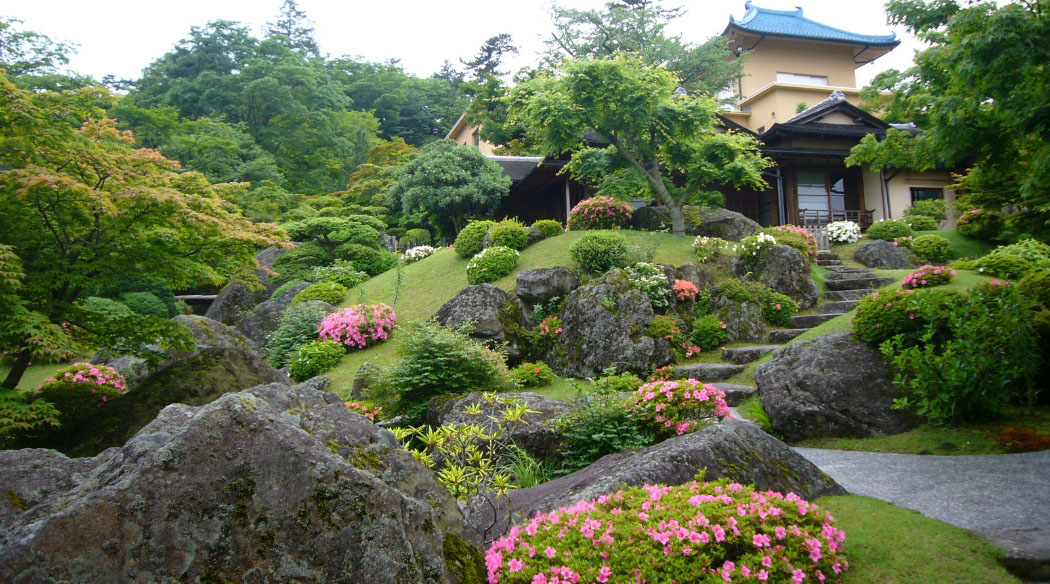The Hakone Museum of Art is a must-visit destination for art and nature enthusiasts in Japan. This unique museum not only showcases precious Japanese ceramics but also boasts a stunning moss garden, offering visitors an unforgettable cultural journey.
Key Information
- Location: Gora, Hakone, Kanagawa Prefecture, Japan
- Established: 1952
- Main exhibits: Japanese ceramic artworks
- Highlights: Moss garden and Sekirakuen Garden
- Recommended visit time: 2-3 hours
Rich Historical Background
The Hakone Museum of Art was founded by Okada Mokichi in 1952. As part of Japan’s post-war cultural renaissance, this museum aimed to preserve and showcase traditional Japanese art, particularly ceramic art. Over the years, it has become a cultural landmark in the Hakone area, attracting art lovers from around the world.
Main Attractions
Japanese Ceramics Exhibition
The core exhibition of the Hakone Museum of Art is its impressive collection of Japanese ceramics. The exhibits span from prehistoric times through the Edo Period (1600-1868). Visitors can admire various large earthenware and ceramic vessels, including a haniwa burial statue classified as an Important Cultural Property. These exhibits not only showcase the evolution of Japanese ceramic art but also reflect the social and cultural changes of different periods. Through carefully designed displays and detailed explanations, the exhibition provides visitors with an opportunity to gain in-depth knowledge of the history and craftsmanship of Japanese ceramic art. This is a rare learning experience for both ceramic enthusiasts and those interested in Japanese culture.
Moss Garden
Another highlight of the museum is its meticulously cultivated moss garden. This serene garden is a verdant oasis with stone paths winding through the shade of maple trees, creating a unique atmosphere. The garden presents different beautiful sceneries with changing seasons: lush green in spring and known for its brilliant red leaves in autumn. November is the best time to appreciate the autumn foliage when the maple trees in the garden are dressed in red, creating a striking contrast with the green moss. The garden also features a teahouse where visitors can enjoy a cup of fragrant Japanese green tea and experience traditional Japanese tea culture. This moss garden is not only a visual treat but also an ideal place to relax and connect with nature.
Sekirakuen Garden
In addition to the moss garden, the museum also boasts a traditional Japanese garden – Sekirakuen Garden. This garden spreads over the slopes of Gora, incorporating the essence of Japanese garden art. The garden is adorned with large decorative stones simulating natural landscapes, and a small stream flows through it, creating a harmonious natural atmosphere. From the higher parts of the garden, visitors can enjoy spectacular views of the Hakone valley and distant mountains. The design of Sekirakuen Garden embodies the concept of “borrowed scenery” in traditional Japanese gardens, cleverly incorporating distant natural landscapes into the garden design. Whether in spring when cherry blossoms are in full bloom or in autumn when maple leaves turn red, Sekirakuen Garden provides visitors with an excellent place for quiet contemplation and appreciation of natural beauty.
Best Time to Visit
- Spring (March-May): Enjoy cherry blossoms and fresh greenery
- Autumn (October-November): View autumn foliage, especially in November
- Winter (December-February): Appreciate snow scenes, perfect for hot spring experiences
Transportation Guide
- From Tokyo:
- Take the Shinkansen or Odakyu Line to Odawara Station
- Transfer to the Hakone Tozan Railway at Odawara Station to Gora Station
- 10-minute walk from Gora Station or take the cable car to Koenkami Station (3-minute walk)
- From other areas in Hakone:
- Use the Hakone Loop Bus to reach Gora Station
Opening Hours and Admission
- Hours: 9:30-16:30 (9:30-16:00 from December to March)
- Closed: Thursdays (except holidays), New Year holidays, during exhibition changes
- Admission: 1430 yen (200 yen discount with Hakone Free Pass)
- Last entry: 30 minutes before closing
Visitor Tips
- Purchase a Hakone Free Pass to save on transportation and admission fees
- Wear comfortable shoes as the grounds have some slopes
- Allow ample time to slowly appreciate the moss garden
- Don’t forget to try a cup of Japanese green tea at the teahouse
- Photography enthusiasts should bring their cameras for beautiful scenery
- Consider getting an audio guide or joining a guided tour for in-depth understanding
Official Website
Conclusion
The Hakone Museum of Art is a place that perfectly combines traditional Japanese art with natural beauty. Whether you’re an art enthusiast, nature explorer, or traveler seeking tranquil moments, this place caters to your needs. Don’t miss this unique cultural gem when visiting Hakone. It not only allows you to delve into the charm of Japanese ceramic art but also find inner peace in its beautiful gardens. When planning your Hakone trip, make sure to put the Hakone Museum of Art on your must-visit list!
